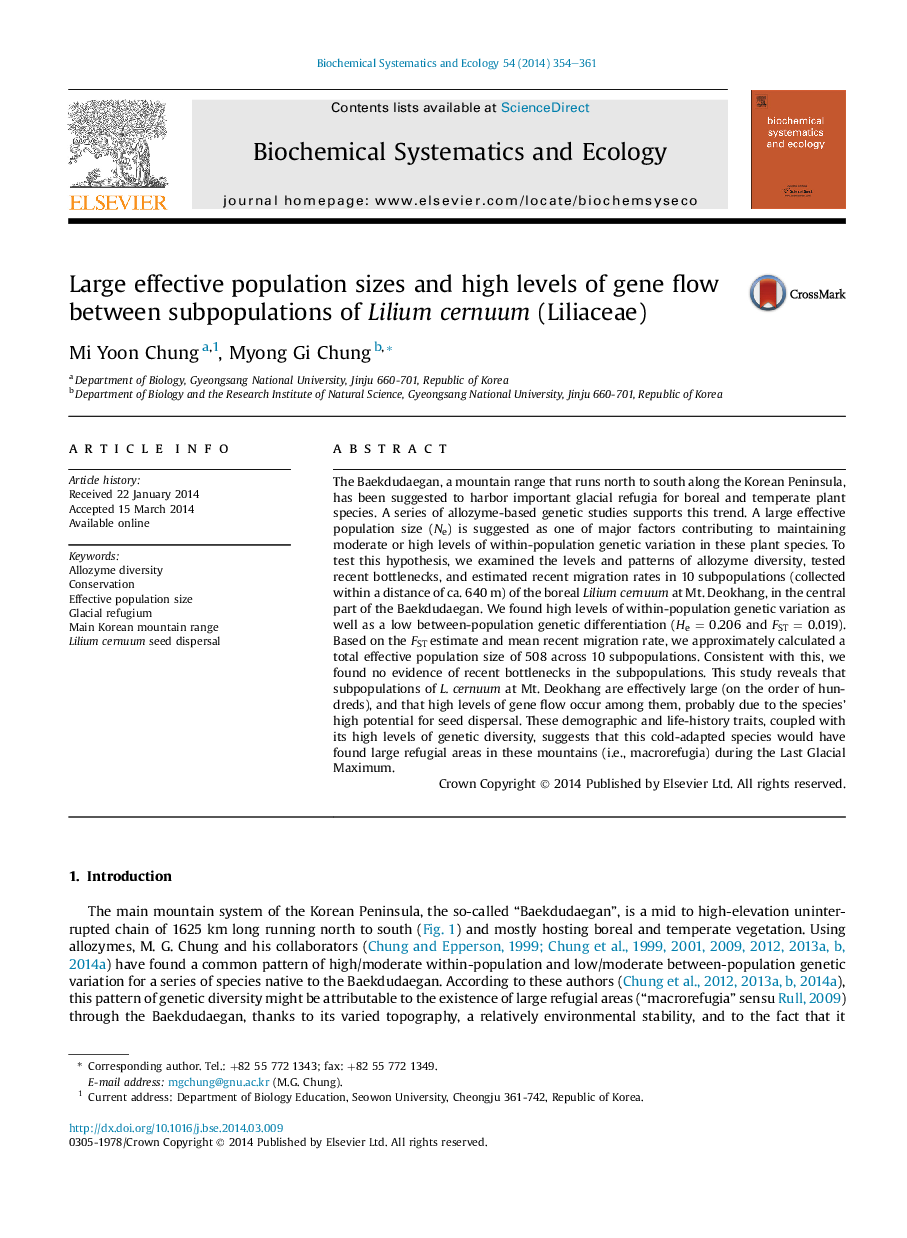| Article ID | Journal | Published Year | Pages | File Type |
|---|---|---|---|---|
| 7769064 | Biochemical Systematics and Ecology | 2014 | 8 Pages |
Abstract
The Baekdudaegan, a mountain range that runs north to south along the Korean Peninsula, has been suggested to harbor important glacial refugia for boreal and temperate plant species. A series of allozyme-based genetic studies supports this trend. A large effective population size (Ne) is suggested as one of major factors contributing to maintaining moderate or high levels of within-population genetic variation in these plant species. To test this hypothesis, we examined the levels and patterns of allozyme diversity, tested recent bottlenecks, and estimated recent migration rates in 10 subpopulations (collected within a distance of ca. 640 m) of the boreal Lilium cernuum at Mt. Deokhang, in the central part of the Baekdudaegan. We found high levels of within-population genetic variation as well as a low between-population genetic differentiation (He = 0.206 and FST = 0.019). Based on the FST estimate and mean recent migration rate, we approximately calculated a total effective population size of 508 across 10 subpopulations. Consistent with this, we found no evidence of recent bottlenecks in the subpopulations. This study reveals that subpopulations of L. cernuum at Mt. Deokhang are effectively large (on the order of hundreds), and that high levels of gene flow occur among them, probably due to the species' high potential for seed dispersal. These demographic and life-history traits, coupled with its high levels of genetic diversity, suggests that this cold-adapted species would have found large refugial areas in these mountains (i.e., macrorefugia) during the Last Glacial Maximum.
Related Topics
Physical Sciences and Engineering
Chemistry
Organic Chemistry
Authors
Mi Yoon Chung, Myong Gi Chung,
